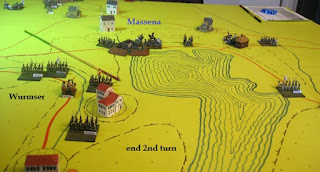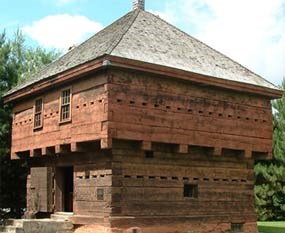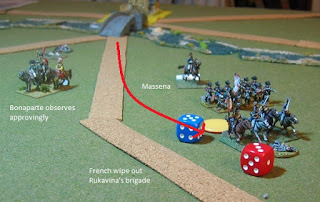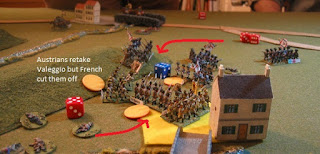Continuing our series of Bonaparte in Italy, we tested the draft Bloody Big Battles scenario of
Castiglione 1796 last night. Two of the Fencibles were elsewhere, at theater
and concerts. Bill played young Bonaparte the first game and I the Austrian
Wurmser. Andrew showed up later and took over my right flank as Quosdanovich.
The three goals at game end: control of Brescia
(French supplies), Austrians getting a brigade from the relief army into Mantua
A brawl broke out between Wurmser’s column and the French
which would go on for the rest of the game, with heavy losses.
Dogged by bad movement rolls, Andrew struggled to take Brescia
And now I blew it. My final attack threw a chance for
victory out the window.
Bill chuckled that I had fallen into his trap. The French
had Brescia Mantua
We returned to the fray. I was now Bonaparte, Bill was
Wurmser and Andrew reprised his role as Quosdanovich. I decided to abandon the
siege of Mantua
Meanwhile…
Post game use of our house rules for officer casualties
revealed that Bonaparte was badly wounded. The bullet was removed successfully
but he died of infection. What will we call the wars that followed? Massena
lost a leg and never returned to service. Despinoy was out of action for 5
days. I had hoped to use the superior quality of the French infantry and their
greatly superior leadership to rapidly eradicate Quosdanovich. They still went
to work but without the array of movement bonuses conferred by all the generals
who’d been laid low.
Sauret was out of action for 2 days.
Critical stuff that didn’t get in photos because fighting
wasn’t directly involved: the Austrians just barely failed to relive Mantua Verona , cutting two Austrian supply roads, but for naught
since supply could be drawn through Legnago and Mantua Mantua Brescia Mantua
French losses: 8 infantry, 2 run off and that long list of
generals down, starting with the mortally wounded Bonaparte. What a disaster.
This is the second scenario in a row that I’ve gotten Bonaparte hit. Austrian
losses: 7 infantry, 3 run off, 2 cut off at game end.
The scenario was a lot of fun. The French must respond to
the Austrians. The variable arrival for Austrians ensures that there’s no
single “solution” to the game. I can see this one having a lot of replay value.
Now if I can get the mat for Wurmser’s second offensive done before our next
session in two weeks…
Edit 4/3: The mat is coming along nicely.





























































